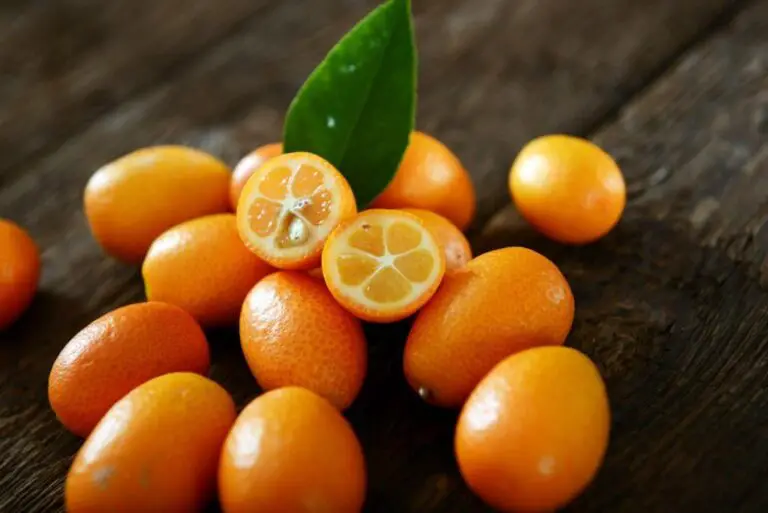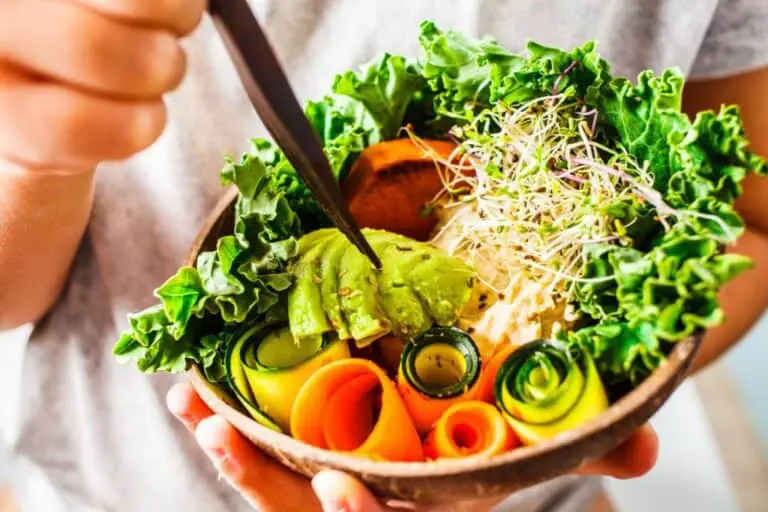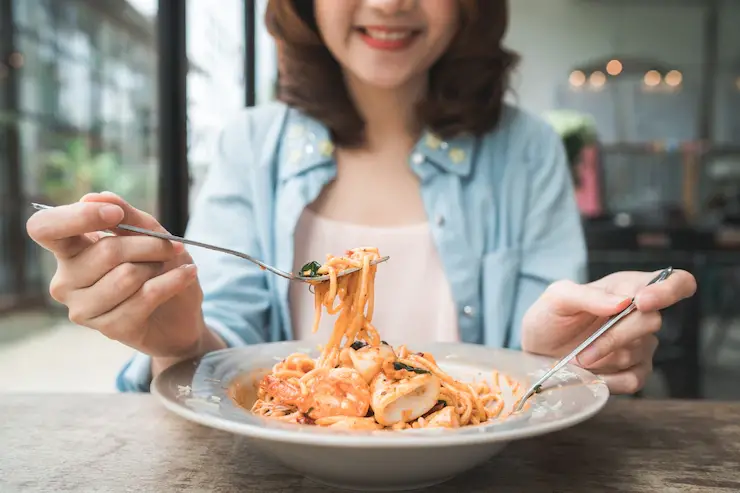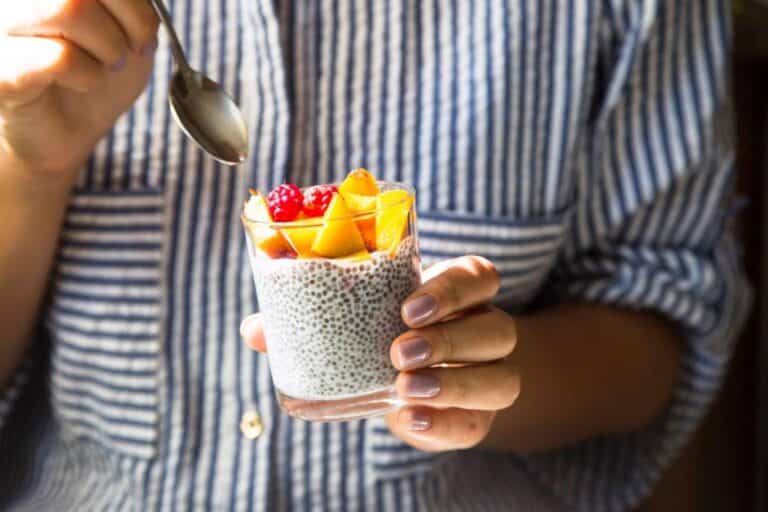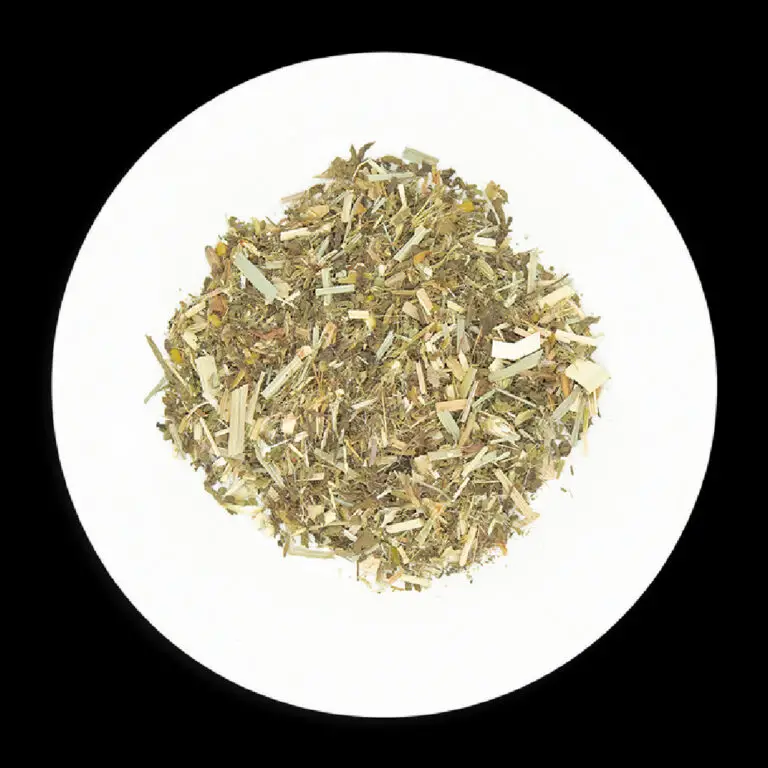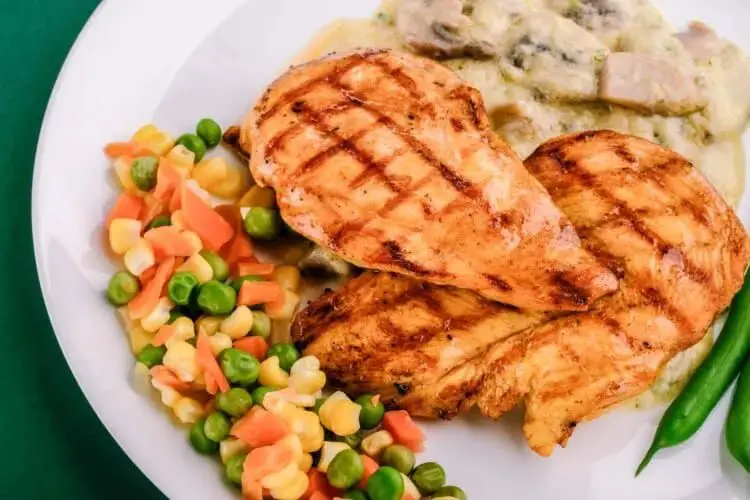How Do You Get Rid of Warmed-Over Flavor in Chicken?
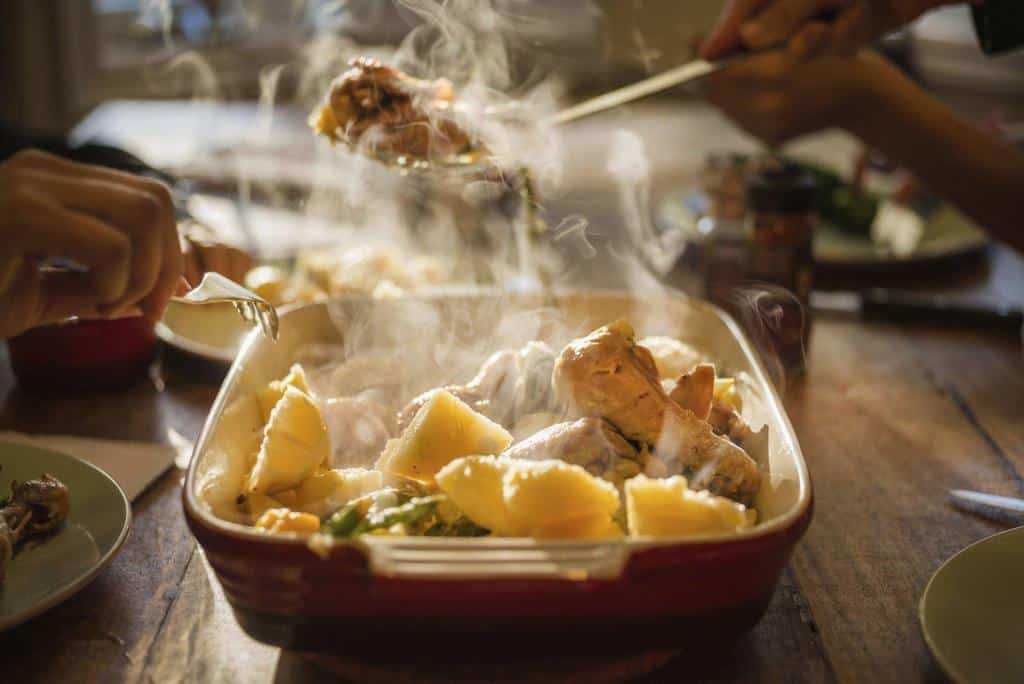
Have you ever been dissatisfied after reheating savory chicken from yesterday only to discover a bland, unpleasant taste? You’re not alone! The culprit behind this culinary letdown is none other than the notorious “warmed-over flavor.” But fret not, for we’re about to embark on a delicious journey to rescue your chicken dishes from this dreaded fate!
In this article, we’ll unravel the science behind the warmed-over flavor, uncovering why it sneaks into our reheated meals and tarnishes the once delightful taste. But fear not – we won’t leave you hanging with a tasteless chicken dilemma. Instead, we’ll arm you with an arsenal of practical techniques and clever tricks to revive your reheated chicken and turn it into a delectable masterpiece.
So, let’s roll up our sleeves, sharpen those kitchen skills, and bid farewell to the dreaded warmed-over flavor in chicken once and for all! Your taste buds are in for a treat!
Understanding the Warmed-Over Flavor (WOF) in Chicken
Warmed-Over Flavor, commonly known as WOF, is a distinct taste and aroma that develops in cooked chicken when it is refrigerated and reheated. It often presents itself as a stale, rancid, or cardboard-like flavor, which significantly diminishes the overall enjoyment of the chicken dish.
The key players behind WOF are the fats and proteins in the chicken. As the chicken is reheated, the process of oxidation takes place, causing fats and proteins to break down and interact with oxygen.
This interaction results in the formation of various compounds that are responsible for the off-flavors and peculiar smell associated with WOF. The longer the chicken is stored and reheated, the more pronounced these undesirable compounds become, impacting the overall quality of the dish.
To illustrate the impact of WOF, here’s a supporting table showing the increase in the concentration of specific compounds over time:
| Compound | Concentration increases over Time |
| Hexanal | 5% |
| Heptanal | 3.5% |
| 2-Pentylfuran | 2% |
| 1-Pentanol | 1.8% |
As these compounds accumulate, the taste and aroma of the chicken become noticeably affected, leading to the dreaded Warmed-Over Flavor.
The Culprits: Lipid Oxidation and Protein Denaturation
1. Lipid Oxidation:
Chicken contains fats that are susceptible to oxidation, especially when exposed to air during refrigeration. This oxidation process generates rancid flavors and compromises the taste of the meat.
2. Protein Denaturation
Reheating causes proteins in chicken to denature, meaning their structure is altered. As a result, the chicken loses moisture and becomes dry, tough, and tasteless.
Impact of WOF on Chicken Quality and Taste
Warmed-Over Flavor is the unfortunate result of reheating cooked chicken, and it can drastically alter the taste and overall quality of the meat. When chicken is subjected to reheating, especially through methods like microwaving or extended storage, the delicate balance of its natural flavors is disturbed. As a result, the once delightful taste turns lackluster and unappetizing.
But the issue doesn’t end there. WOF also has a profound effect on the texture of the chicken. Imagine sinking your teeth into a piece of meat that’s lost its juiciness and tenderness, leaving you with a dry and tough mouthful. The once succulent chicken becomes a far cry from its original state, making the dining experience significantly less enjoyable.
Let’s take a look at a comparison table to see just how significant the impact of Warmed-Over Flavor can be on chicken quality and taste:
| Aspect | Freshly Cooked Chicken | Warmed-Over Chicken |
| Taste | Rich and Flavorful | Dull and Uninspired |
| Texture | Juicy and Tender | Dry and Tough |
| Overall Quality | Excellent | Mediocre |
As consumers, we should be mindful of the effects of WOF on chicken and opt for freshly prepared dishes whenever possible. The difference in taste and quality is undeniable, and by making this small but significant choice, we can ensure that our culinary experiences are always a delightful treat for our taste buds.
Techniques to Eliminate Warmed-Over Flavor

Now that we’ve identified the root causes, it’s time to take action and rescue our chicken from the dreaded warmed-over flavor. Here are some tried-and-true techniques that will breathe new life into your reheated chicken dishes:
1. Quick Reheating
To reduce the impact of oxidation and protein denaturation, ensure that you reheat your chicken quickly. Use high heat and minimize the time spent in the reheating process. This will help to maintain the moisture and tenderness of the meat.
2. Add Moisture During Reheating
One effective way to combat dryness is by adding moisture during the reheating process. Consider sprinkling a little chicken broth or water over the chicken before placing it in the oven or microwave. This will help keep the chicken juicy and succulent.
3. Marinating Magic
Marinating the chicken before reheating can do wonders for revitalizing its flavor. Choose a marinade that complements the original seasoning and enhances the taste. A mix of olive oil, garlic, lemon juice, and herbs is a fantastic option.
4. Embrace Sauces and Gravies
Sauces and gravies can be your secret weapons for rescuing reheated chicken dishes. They add moisture, flavor, and a delightful texture. Consider options like mushroom sauce, fish sauce, teriyaki glaze, or a classic creamy gravy.
5. Opt for On-the-bone Cuts
If possible, opt for on-the-bone cuts when cooking chicken. Bones can act as insulators, helping to shield the meat from excessive heat during reheating. This helps prevent overcooking and maintains the chicken’s natural juiciness.
6. Creative Chicken Salad
Transform your warmed-over chicken into a delicious chicken salad. Chop the chicken into bite-sized pieces and mix it with fresh veggies, fruits, and a zesty dressing. This not only masks any off-flavors but also creates a delightful new dish.
Read: How Much Chicken Meat Is Needed for a Taco?
Does Freezing Chicken Impact the Warmed-Over Flavor?
Freezing chicken is a common practice to extend its shelf life and preserve its quality. However, freezing can have an impact on the development of Warmed-Over Flavor (WOF). When chicken is frozen, it undergoes physical changes that can affect its texture and moisture content, which in turn may contribute to the formation of WOF compounds during subsequent reheating.
One significant change that occurs during freezing is the formation of ice crystals within the chicken’s cells. These ice crystals can damage the cell structure, leading to the release of moisture when the chicken is thawed and reheated. As a result, the chicken may lose some of its juiciness, becoming drier and more prone to developing the characteristic WOF taste.
To gain a deeper understanding of how freezing affects WOF, let’s take a look at the following table, which shows the impact of freezing on the concentration of key compounds associated with WOF:
| Compound | Fresh Chicken | Frozen and Thawed Chicken |
| Hexanal | 0.1% | 0.5% |
| Heptanal | 0.08% | 0.4% |
| 2-Pentylfuran | 0.05% | 0.3% |
| 1-Pentanol | 0.04% | 0.2% |
The table clearly demonstrates that freezing and thawing chicken leads to an increase in the concentration of WOF compounds, indicating that freezing does have an impact on the development of the off-flavors.
To minimize the impact of freezing on WOF, it is essential to follow proper freezing techniques. Use high-quality freezer bags or vacuum-sealed containers to prevent air exposure, as increased air exposure can accelerate flavor deterioration.
Additionally, thaw frozen chicken slowly in the refrigerator to preserve its moisture content and reduce the risk of WOF formation. By employing these practices, you can help ensure that your frozen and thawed chicken dishes retain their optimal flavor and juiciness, making for a more delightful dining experience.
Foods to Pair with Reheated Chicken
Now that you’ve rescued your chicken from the brink of warmed-over flavor, let’s explore some delightful side dishes and beverages to complement your rejuvenated meal:
Side Dishes
- Mashed Potatoes: Creamy and buttery mashed potatoes are the perfect accompaniment to your savory chicken. Their smooth texture provides a nice contrast to the meat.
- Roasted Vegetables: Colorful roasted vegetables, drizzled with olive oil and seasoned with herbs, add a burst of flavor and nutrition to your plate.
- Quinoa Salad: A refreshing quinoa salad with cucumbers, cherry tomatoes, feta cheese, and a lemon vinaigrette complements the chicken beautifully.
- Garlic Bread: Indulge in some warm garlic bread that you can use to mop up any remaining sauce or gravy on your plate.
Beverages
- Iced Lemonade: A glass of chilled, tangy lemonade is a delightful beverage that pairs well with chicken dishes.
- Iced Tea: For a more robust option, go for a glass of iced tea, which balances out the meal’s flavors.
- Sparkling Water: Sparkling water with a twist of lime offers a light and refreshing option for a beverage.
Cooking Methods to Reduce Warmed-Over Flavor
The way you cook chicken can significantly impact WOF. Consider these cooking techniques:
The Role of Sous Vide Technique: Sous vide cooking involves sealing chicken in an airtight bag and cooking it in a precisely controlled water bath. This method helps retain moisture and reduces the occurrence of WOF.
Slow Cooking and Low-Temperature Methods: Cooking chicken at low temperatures for extended periods can break down collagen and tenderize the meat while minimizing WOF formation.
Grilling and Roasting for WOF Reduction: Grilling or roasting chicken at moderate temperatures can enhance the flavors and reduce the risk of WOF, especially when paired with complimentary seasonings.
Incorporating these prevention techniques and cooking methods into your culinary repertoire will help you bid farewell to Warmed-Over Flavor and savor the delightful taste of perfectly cooked chicken dishes every time. So go ahead, cook with confidence, and enjoy chicken at its finest!
The Influence of Chicken Quality on Warmed-Over Flavor
Choosing High-Quality Chicken Cuts: Opting for high-quality chicken cuts is essential in reducing the risk of WOF. Look for fresh, well-trimmed pieces that are free from discoloration and off-odors. High-quality chicken contains fewer additives that may contribute to unwanted flavors.
Organic vs. Conventionally Raised Chicken: Some individuals find that organic chicken has a superior taste due to its natural diet and higher animal welfare standards. While conventionally raised chicken can also be delicious, organic options may provide a better overall flavor profile.
Impact of Chicken Processing on WOF: The way chicken is processed can affect its flavor. For example, chicken that has been mechanically processed or treated with certain solutions may be more susceptible to WOF. Opt for minimally processed chicken whenever possible.
Proper Handling and Storage of Leftover Chicken
Safe Practices for Storing Cooked Chicken: To minimize WOF in leftover chicken, ensure it is promptly refrigerated after cooking. Use airtight containers or wrap it tightly in plastic wrap or foil to prevent exposure to air, which can accelerate flavor deterioration.
Reheating Methods to Minimize WOF: When reheating chicken, use gentle methods like microwaving with a moist paper towel, steaming, or using a low-temperature oven. Avoid overheating, as this can lead to dryness and intensify WOF.
Creative Recipes for Leftover Chicken: Transforming leftover chicken into new dishes can be a fun way to eliminate WOF. Try adding it to salads, stir-fries, or wraps, or use it as a topping for pizzas and pasta dishes.
Conclusion
There you have it – a comprehensive guide to rescuing your chicken dishes from the unpleasant warmed-over flavor. By understanding the science behind the issue and implementing these simple yet effective techniques, you can elevate your reheated chicken to a whole new level of deliciousness.
Remember to embrace creativity, experiment with flavors, and complement your dishes with fantastic side dishes and beverages. Happy cooking and bon appétit!
FAQs on Removing Warmed-Over Flavor in Chicken
Can you use marinades to reduce warmed-over flavor in chicken?
Absolutely! Marinating chicken before reheating can do wonders for revitalizing its flavor. Opt for a marinade that complements the original seasoning and adds moisture. A mix of sesame oil marinade for chicken, olive oil, garlic, lemon juice, and herbs is an excellent choice to breathe new life into reheated chicken dishes.
How does brining help combat warmed-over flavor in chicken?
Brining chicken before cooking or reheating it can significantly reduce the risk of warmed-over flavor. The brine, typically a mixture of salt, sugar, and water, helps the chicken retain moisture, preventing it from drying out during reheating. Moist chicken means a tastier and juicier dish without those off-flavors.
Are there any natural remedies to eliminate warmed-over flavor in chicken?
Yes, there are! Lemon juice, vinegar, or citrus-based marinades can help neutralize off-flavors in reheated chicken. Additionally, incorporating fresh herbs like rosemary, thyme, or basil can add aromatic elements that mask or counteract the warmed-over taste, elevating your dish to new heights.
How can I store leftover chicken to prevent warmed-over flavor?
To prevent warmed-over flavor, store leftover chicken correctly. Allow the chicken to cool to room temperature, then seal it tightly in an airtight container before refrigerating it promptly. Avoid leaving the chicken exposed to air, as this can accelerate oxidation and off-flavor development. There is close relation between refrigeration and taste of cooked chicken.
Can warmed-over flavor in chicken be harmful to your health?
While warmed-over flavor in chicken is not harmful to health, it can lead to an unappetizing taste and texture. However, it is crucial to ensure that reheated chicken reaches a safe internal temperature of 165°F (74°C) to prevent foodborne illnesses.
Are there any specific spices or herbs that can help reduce warmed-over flavor?
Indeed! Spices and herbs can do wonders for minimizing warmed-over flavor. Consider using garlic, ginger, cumin, or paprika to enhance the taste of reheated chicken. These aromatic ingredients can elevate the overall flavor profile and distract from any lingering off-tastes.
Is there a recommended temperature range for cooking chicken to minimize the development of warmed-over flavor?
To minimize warmed-over flavor, cook chicken to an internal temperature of 165°F (74°C) when initially preparing it. This ensures that the chicken is fully cooked without being overcooked, which can exacerbate the warmed-over taste when reheated.
Can I use certain cooking oils to prevent warmed-over flavor in chicken?
Absolutely! Opt for cooking oils with higher smoke points, like vegetable oil or grapeseed oil, when preparing chicken. Using oils with higher smoke points helps maintain the integrity of the chicken’s natural flavors, reducing the risk of a warmed-over taste during reheating.

